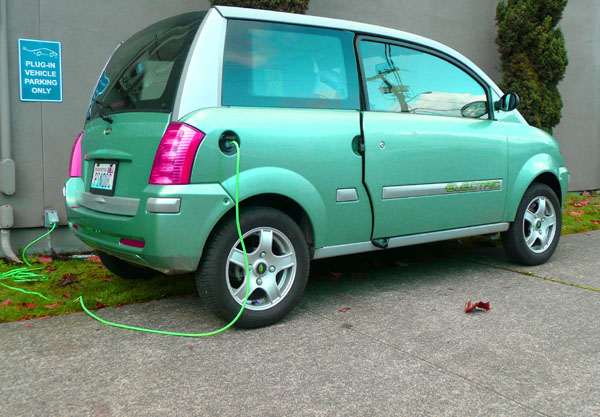The Low-Hanging Fruit Of Public Urban Eco-Services
Electric cars and charging stations have arrived, bringing with them the opportunity to reduce commuters’ carbon footprint. Nowhere is this more true than in dense urban areas.
Even if you travel by single occupancy vehicle (as opposed to transit or bicycle) living in the dense, compact-development context of multifamily housing can bring your carbon footprint down way below the national average. It is well-known that folks who live in vertical neighborhoods are far more likely to find what they need (and head out to earn their living) via much shorter trips than their single-family dwelling counterparts.
So I find it surprising how little discussion there has been about the apartment and condo context for electric vehicle owners. And that’s why I was glad to see this Transportation Nation blog post recently, featuring a condo dweller who was among the first in the nation to own the new Chevy Volt. His challenge (working with his HOA to retrofit their parking area) will hopefully be resolved; the solution celebrated and replicated.
For while there’s simply no match for a city networked with robust, convenient and pleasant public transit, walking and biking routes, rethinking a car-oriented city takes time. While we wait, making it easy for individuals to lighten the impact of their single-occupancy vehicle, especially when they’re already urban, ready and willing to pay that premium for eco-piety, behooves us all.
Here in the Puget Sound, in particular, since our grid is fed largely by lower-impact hydropower, getting urbanites off oil and onto the grid, can be low-hanging fruit.
Speaking of fruit, how many multifamily buildings have food waste pickup at this point?
>>>
Nate Cole-Daum is a board member of Great City.


